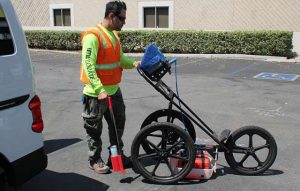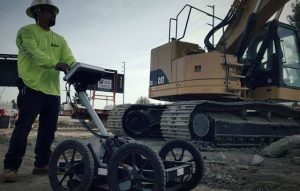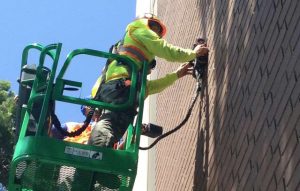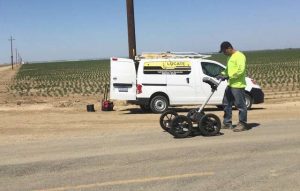Underground Utility Locating Using GPR
Util-Locate uses the latest equipment and cutting edge technologies. With over 13 years of experience, Util-Locate shows its expertise to produce cost-effective fast, efficient and accurate GPR surveys solutions.
Util-Locate can determine the most suitable survey methodology based on clients' specification, and are proud to be able to provide onsite real-time data.
Ground Penetrating Radar (GPR) is a non-intrusive surveying technique used to locate utilities, rebar, conduits, voids, and other features below the surface.
GPR uses pulses of energy to image the subsurface. An integrated computer records the strength and time required for the return of reflected signals, and stores this data on digital media. Differences occur in natural and man-made materials such as geological structures, pipes and wire.
As a non-destructive and dynamic survey technique, GPR can be applied on a variety of surfaces including rock, soil, ice, fresh water, pavements, and concrete structures. Read more about electric line locator.
The benefits of using Ground Penetrating Radar
GPR is able to detect metallic and non-metallic services such as polyethylene water and gas pipes as well as utilities such as fiber-optic cables which are not normally traceable using any other method.
Using GPR alone we cannot guarantee finding or identifying all buried line services, but when used in conjunction with Electro-Magnetic detection, the most complete and comprehensive answer available is produced.
Benefits of Ground Penetrating Radar
- Non-intrusive and safer way of mapping
- Effective site investigation pays dividends throughout the life of a project
- Alleviates the need for digging and the disturbance of sensitive sites
- Advantages over techniques such as x-ray include cost and time savings, and improvements in scheduling and safety
- Early detection of warning signs
- Quick, reliable diagnosis of problem




FREQUENTLY ASKED QUESTIONS
There are many benefits of using ground penetrating radar, including its ability to penetrate through most materials, its high resolution, and its relatively low cost. Additionally, ground penetrating radar is non-destructive, meaning that it can be used to survey an area without causing any damage. Some of the specific benefits of using ground penetrating radar include its ability to: -Detect buried objects, such as pipes, cables, and foundations
There are several limitations to ground penetrating radar that should be considered when using this technology. First, ground penetrating radar is limited in its ability to penetrate certain types of soils and rocks. This limitation is due to the fact that the radar waves are reflected differently by different materials. Soils and rocks that are highly conductive or have a high water content tend to reflect radar waves more than those that are less conductive or have a lower water content.
Ground penetrating radar (GPR) is a type of active remote sensing that uses radar pulses to image the subsurface. It is typically used to detect buried utilities, archaeological features, and environmental contaminants. GPR can also be used to measure the thickness of pavement, snow, and ice. GPR is similar to other types of active remote sensing, such as sonar and radar, in that it uses electromagnetic waves to image the subsurface.
Ground penetrating radar (GPR) is a geophysical method that uses radar pulses to image the subsurface. This non-destructive method uses electromagnetic radiation in the microwave band (UHF/VHF frequencies) of the radio spectrum, and detects the reflected signals from subsurface structures. GPR can be used in a variety of media, including rock, soil, ice, fresh water, pavements and structures.
Yes, there are health and safety concerns associated with ground penetrating radar. The electromagnetic radiation emitted by the radar can be harmful to human health, and the radar waves can also cause interference with electronic equipment.
